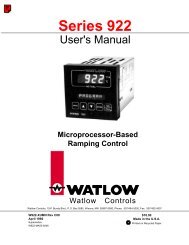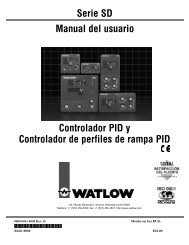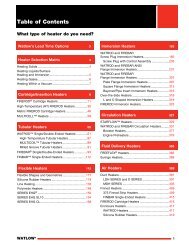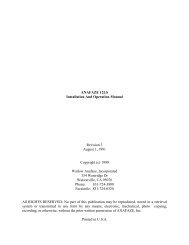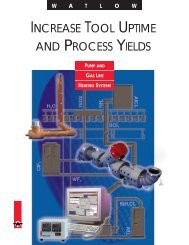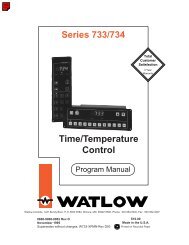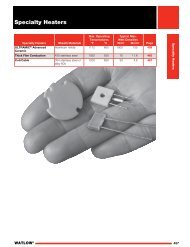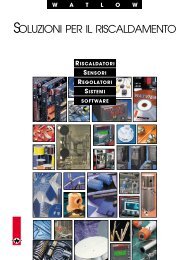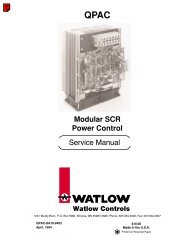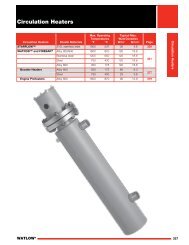pid practical guide.pdf - Watlow
pid practical guide.pdf - Watlow
pid practical guide.pdf - Watlow
You also want an ePaper? Increase the reach of your titles
YUMPU automatically turns print PDFs into web optimized ePapers that Google loves.
Example:A proportional band of 50 will have a change of 100% in the output when the processvariable has changed by 50°F/C from the set point. Anything greater than 50° is known as“outside the proportional band”, thus there is no further change of the output.Because the normal dynamic response of Proportional, Integral, and Derivative controlis an ever-changing process variable and output signal, it can be difficult to get a handle onwhat exactly is happening without capturing a specific moment in time. The graph belowdoes this well in that there is a specific step change applied to the proportional band wherethe error from the set point is clearly defined and static. With this known error we can thencalculate what the output should be and then actually confirm the calculation by monitoringthe control output over time.The graph below shows an increase in the output of 20% for a known step change inthe process variable. With the current settings for Integral and Derivative equal to zero theoutput will remain at 20% unless there is another step change in the process variable.Figure 2.0A small proportional band can cause the process variable to oscillate around the setpoint; on the other hand, a proportional band that is too high may keep the process variablefrom ever reaching the set point. Since cycling of the process variable can be the result ofa small proportional band (high gain), increasing the proportional band (lowergain) is one way to reduce cycling of the process variable. As a result of this increase, thereduced controller output will become proportional to a change in the input. Becauseof this proportional response to the input most refer to this function as the proportionalband. The proportional function of the control is to control the overall process gain.2.3.3 Suggestions for Initial Proportional SettingsThe general rule for proportional control is that the smaller the change of the outputfor a given change of the input, the finer the resolution of control; and thus a moreproportional control is achieved. A high amount of change in the output will result in a6



